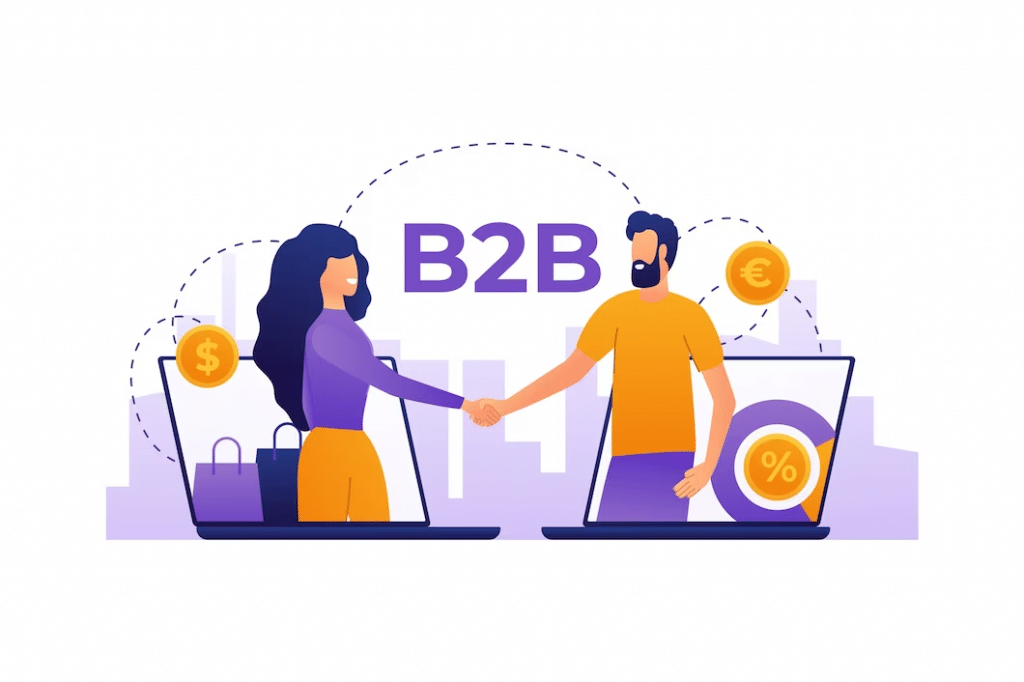
In the B2B (business-to-business) industry, there’s only so much outreach you can do before you’ve saturated all channels. The catch is that if you haven’t built a positive brand reputation among your target buyers, you’re setting yourself up for disappointment in the long run.
Wondering how you can pivot your marketing plan and nudge more buyers down the sales funnel? The answer lies in two words: inbound marketing.
B2B inbound marketing simplifies lead generation and brings customers to you instead of you going after them. Inbound marketing campaigns focus on engaging prospects at every stage of the buyer journey before they’re finally convinced to buy from you.
In this article, we’ll dive deeper into the nuts and bolts of inbound marketing for B2B companies and break down our best tactics to help you get started.
What Is Inbound Marketing?
Inbound marketing strategies involve tailoring your online marketing activities to match the buyer’s journey.
The B2B buying process
For business customers, the B2B buying process starts when a buyer realizes they have a problem they can’t quite define yet. This journey has three main parts:
🔵 Awareness stage: Potential clients recognize a business challenge or opportunity.
🟡 Consideration stage: Prospects are exploring various solutions.
🟢 Decision stage: Buyers are ready to select a solution.

The decision-making process is not linear
This path isn’t always a straight line—buyers might take their time to reach a decision or even go back and forth between stages, depending on what they need to buy.
Recently, the way buyers act in each stage has changed. Now, they like to be in charge of their buying journey.
They choose what information they want and when they want to talk to sellers. This means they do a lot of their research themselves, without wanting outbound marketing tactics like ads or sales calls to interrupt them.
Inbound marketing is all about understanding this change. It’s about being helpful and giving buyers useful information while they’re looking up things on their own, and not trying to sell to them all the time.
Inbound marketing builds trust by giving buyers what they need and respecting their way of doing things.
Inbound marketing tactics aim to target prospective customers in their buyer journey:
🧲 Attract: Draw in the right audience with high-quality content. This is achieved through strategies like content marketing (blogs, articles, whitepapers), search engine optimization (SEO), and social media marketing. The idea is to provide value in a way that makes your audience naturally gravitate toward your brand.
💬 Engage: Once the audience is attracted, the focus shifts to engaging them by showing that your products or services can solve their problems or meet their needs. This involves interactive content, targeted communication like email marketing, and personalized experiences based on customer data and insights.
✨ Delight: After engaging with customers, inbound marketing looks to provide exceptional ongoing support, service, and content to turn customers into loyal advocates for your brand. This includes customer service, loyalty programs, and asking for feedback to improve your offerings.
💡Expert insight: Is the inbound methodology better than outbound marketing?
Inbound and outbound marketing each has its strengths, and whether one is better than the other depends on your business goals, target audience, and resources.
Inbound marketing is often more cost-effective and builds longer-term relationships with customers. It’s effective in a digital age where consumers prefer to research and find solutions on their own. It’s great for brand building and establishing trust.
Outbound marketing is more direct and can generate immediate results. It’s useful for reaching a broad audience quickly, particularly in markets less influenced by digital trends.
However, traditional outbound marketing can be more expensive and it’s sometimes less well-received as many prefer less intrusive marketing.
In summary, neither is inherently better; they serve different purposes and can be used effectively in different contexts. Often, a mix of both strategies works best.
Next, we’ll talk about the best ways to use inbound marketing for each part of the B2B buyer’s journey, which will help you connect with your potential customers in the right way at each step.
B2B Inbound Marketing Strategy: Top Tactics & Tools for 2024
When done right, an inbound marketing strategy can skyrocket your customer acquisition numbers and make you hit all your marketing goals.
It’s in the numbers: An inbound marketing strategy produces 54% more leads than traditional outbound practices.
We’ve compiled our top marketing tactics to ace inbound marketing according to each phase of the B2B buyers’ journey.
Awareness Phase
The primary aim at this stage is to draw in potential customers who are most likely to benefit from and be interested in what you offer.
It’s about creating a first impression that positions you as a knowledgeable and reliable source within your industry.
Here are the top strategies to use during this phase:
Content marketing
80% of business decision-makers prefer to get company information from a series of articles versus an advertisement. This is a golden opportunity for businesses to create engaging content that captures the attention of potential customers.
The content strategy should be to create relevant content that resonates with your ideal customer’s interests, challenges, and pain points. This involves understanding your audience deeply—what they care about, the problems they face, and the type of information they value.
Below we’ll discuss the best content types to attract people to your offering:
🧲 Blogs: Write blog posts that address common questions and topics in your industry.
🧲 Videos: Produce engaging videos that explain complex concepts simply or showcase your products/services.
🧲 Infographics and e-books: Develop visually appealing infographics and comprehensive e-books for deeper insights.
By providing valuable content as part of your inbound marketing campaign, you establish your brand as an authority, which builds trust with your audience.
Social media marketing
Another key part of your inbound marketing strategy is leveraging social media sites. In 2023, there was an estimated total of 4.89 billion social media users worldwide. That’s a big audience that no doubt includes the decision-makers you want to attract.
Use these social media platforms to share your content and engage with your audience.
The key is to be present on social media channels where your target audience is most active—be it LinkedIn, X (formerly Twitter), Facebook, or Instagram.
Here’s what to do on your social channels:
🧲 Content sharing: Regularly post blog articles, videos, and other relevant content.
🧲 Community engagement: Participate in discussions, answer questions, and interact with users; over time you’ll become a well-known expert in your field.
🧲 Paid advertising: Use targeted ads to reach a broader or more specific audience.
🧲 Build networks: Connect with your ideal buyers and nurture meaningful relationships before converting them into customers.
Social media allows direct engagement with your audience, which enhances brand awareness and drives traffic to your website or other digital platforms. Share a mix of promotional, value-adding, and relevant content to engage your followers while reiterating your core value propositions.
For example, Shopify has a fun and entertaining Instagram feed that features its users, brand updates, and other engaging posts.
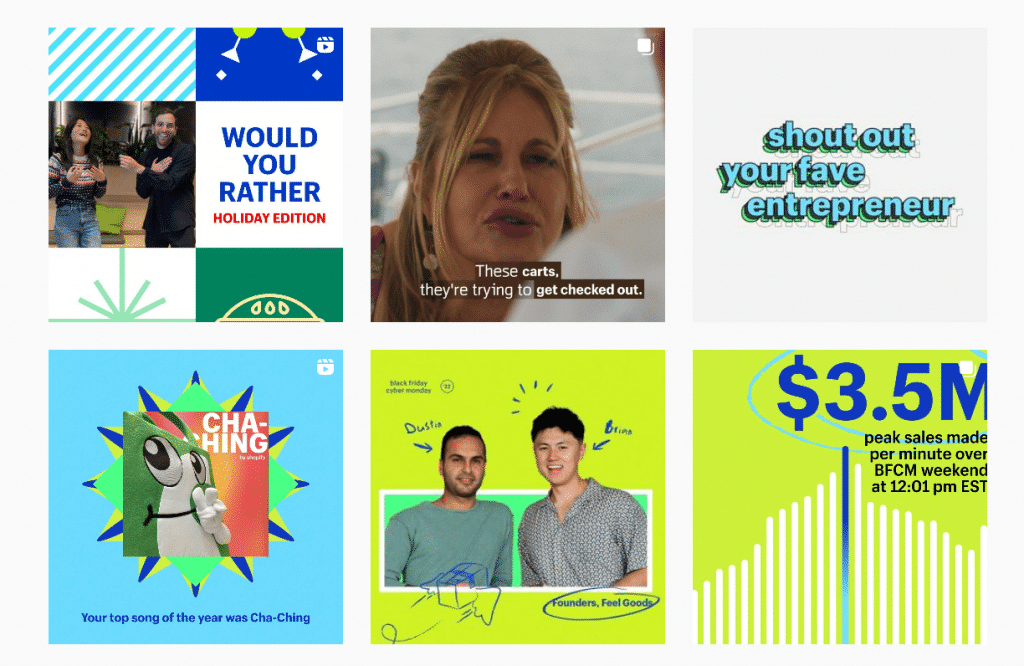
SEO (Search Engine Optimization)
When someone is looking for a product or service, the first place they are likely to start is Google—53% of all website traffic comes from organic searches.
Because of this, it’s important to ensure your content is optimized to rank well in search engine results. This means your content is more likely to be found when potential customers search for relevant topics.
Here are a few tips on how to optimize your SEO:
🧲 Keyword research: Identify and use keywords that your target audience is searching for.
🧲 On-page SEO: Optimize individual content elements like titles, headings, and meta descriptions.
🧲 Off-page SEO: Build backlinks from reputable sources to enhance your site’s authority.
Good SEO practices increase your visibility on search engines, which makes it easier for potential customers to find you when they need information.
Capture attention through website personalization
Besides funneling prospects in through your content and SEO game, B2B companies can deliver an exceptional experience with website personalization to impress their buyers.
Personalizing your website is about creating a dynamically tailored and standout experience for every visitor. With advanced tools like Hyperise, you can personalize the website UI for any user without the hassle of coding anything.
Hyperise uses data enrichment techniques to customize details across your website, like visitor name, business name, and more.
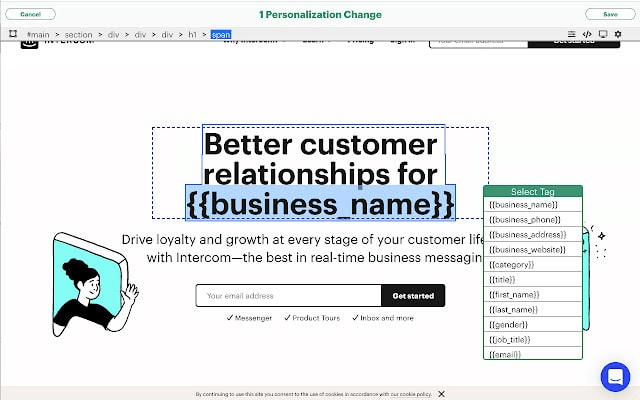
Plus, it’s easy to get started with. Design your site with any website builder and integrate Hyperise into your builder to customize the user experience.
Overall, in the “Awareness” stage of inbound marketing, the focus is on creating and distributing content that pulls in the right audience, builds brand awareness, and sets the stage for deeper engagement.
Consideration Phase
In this phase, your goal is to position your brand as the ideal solution provider, which will help leads evaluate your offerings.
Build social proof and authority
Once your prospects have moved into the consideration stage of their journey, they’ll want to know the ways in which you’re better than your competitors.
This is where you need to shift your marketing efforts toward compiling enough social proof to win their trust.
Here’s how to do it:
💬 Curating testimonials: Gather testimonials from satisfied customers. These testimonials should ideally come from clients who represent your target market or have faced similar challenges to your prospects. Ensure these testimonials are specific about how your product or service helped solve a problem or add value.
💬 Developing in-depth case studies: Create detailed case studies that outline a customer’s journey from facing a challenge to finding a solution with your product. Focus on measurable results and specific benefits. A compelling case study often includes the client’s background, the problems they faced, the solution you provided, and the results or improvements after they’ve implemented your solution.
💬 Utilizing video stories: Videos can be a very engaging medium. Consider producing video testimonials or documentaries of clients discussing their experience with your product. This adds a human touch and can be more convincing than written content.
💬 Highlighting recognitions and awards: If your product or company has received any industry awards or recognitions, showcase them. This serves as an endorsement of your product’s quality and effectiveness.
Social proof can be one of the biggest drivers of inbound leads. It gives buyers the necessary confidence in your product/service to enquire more and make a buying decision. By adding testimonials to your sales landing page, you’ll generate more inbound interest. Here’s an excellent example of how Customer Camp did this:
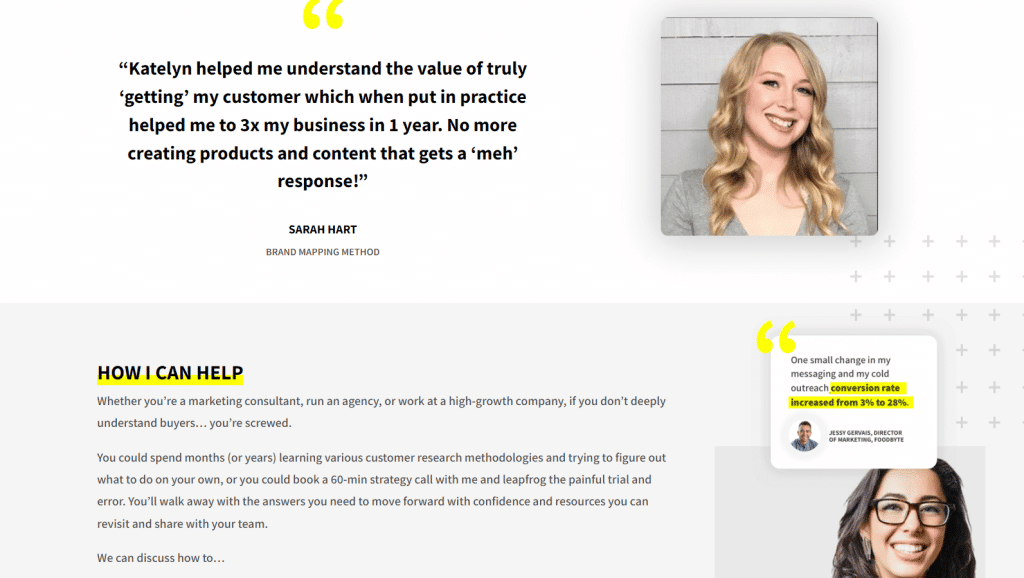
Generate leads through gated content
Gated content can be your power weapon for generating leads at scale. The idea is to create value-packed content that your ideal buyers would want to consume. Then, gate it behind a lead form to get people’s contact information and add them to your qualified leads database.
You can create multiple types of gated content, such as:
💬 Original research: Gate downloadable assets that contain original insights, like industry reports, whitepapers, survey reports, and more. Create high-quality content to leave a positive impact on interested buyers.
💬 Lead magnets: Give people a free resource, like templates, e-books, checklists, or something similar. These lead magnets can bring leads at scale because people are comfortable sharing their information in exchange for the value of your resource.
💬 Webinars: Conduct webinars on interesting topics your audience wants to hear about. Then gate the recorded videos to get lead information for webinar access.
💬 Product demos: B2B SaaS companies can ask interested users for specific information in exchange for a product demo. This allows the sales team to qualify the lead and customize the demo for their needs.
💬 Collaborate with influencers: Leverage the credibility of industry influencers to build trust and provide validation. This could be in the form of cohosted webinars or guest blog posts from industry experts.
Email marketing
As we mentioned above, this stage is all about creating valuable content for potential customers. This content, however, is useless if you can’t share it effectively. This is where email marketing comes in.
Create a series of emails tailored to your potential customer’s interests and needs. These emails should gradually provide more information and convince the recipient oft the value of your brand and how it can solve their problems.
Here’s a step-by-step breakdown of how to do it:
Automating the process
Set up a system where these emails are sent automatically to marketing qualified leads. This involves:
➡️ Setting triggers: Decide which actions by the recipient (like signing up on your website or clicking on a previous email) will trigger the next email in the sequence.
➡️ Deciding the number of emails: Determine how many emails should be sent in this sequence and at what intervals.
Preparing email content
Write and design your emails. This involves creating various types of emails such as follow-up messages. Make sure these emails are interesting and relevant to your audience.
Setting up automation workflow
This is about programming your email system. You’ll need to tell it when to send which email, based on the actions the recipient takes. You’ll also need to decide how much time should pass between each email.
Include a call to action (CTA)
Every email should have a clear CTA, like asking the reader to sign up for a demo or visiting your website. It is crucial to encourage the recipient to take the next step, as it will help you get a better return on investment (ROI) from your email campaign.
Add a personal touch with video personalization
Leave a lasting impression with your inbound marketing efforts by using video personalization. You can personalize videos for individual buyers to capture their attention and explain the benefits of buying from you.
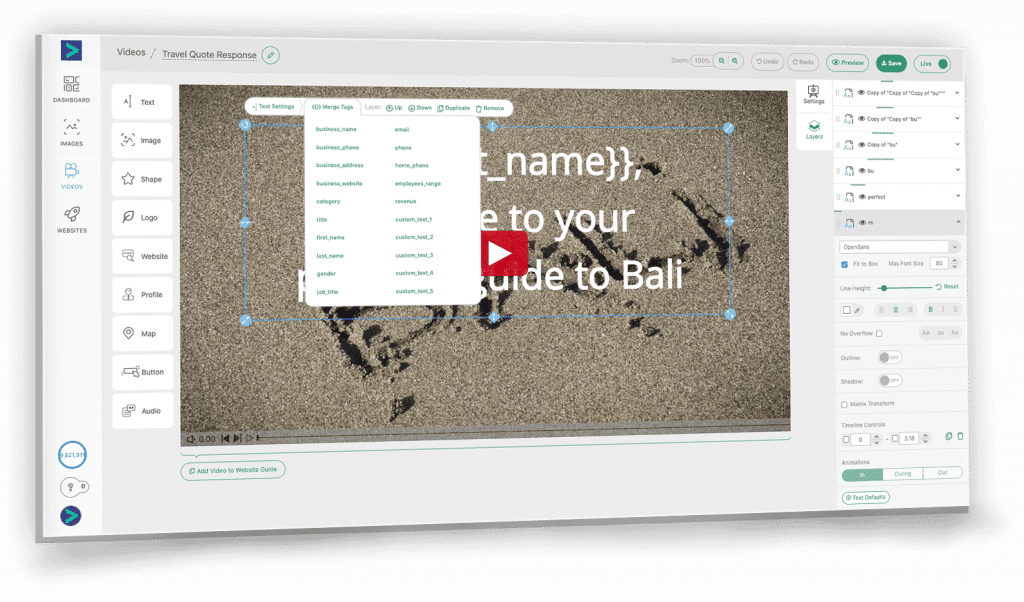
Sounds like too much work? A personalization toolkit like Hyperise will do all the heavy lifting on your behalf to personalize videos for your B2B video marketing in different formats, like:
- Onboarding
- Video sales letter
- Info & quote packs
- Training & courses
- Webinar & event replays
- Personalized introductions
You can also create explainer videos to share on your website, social media channels, and emails to demonstrate your brand’s unique value.
In the Consideration stage of B2B marketing, the emphasis is on developing a deeper understanding of the potential client’s business needs and providing them with relevant, personalized solutions.
This approach helps build stronger relationships and positions your brand as a valuable partner in their business operations.
Decision Phase
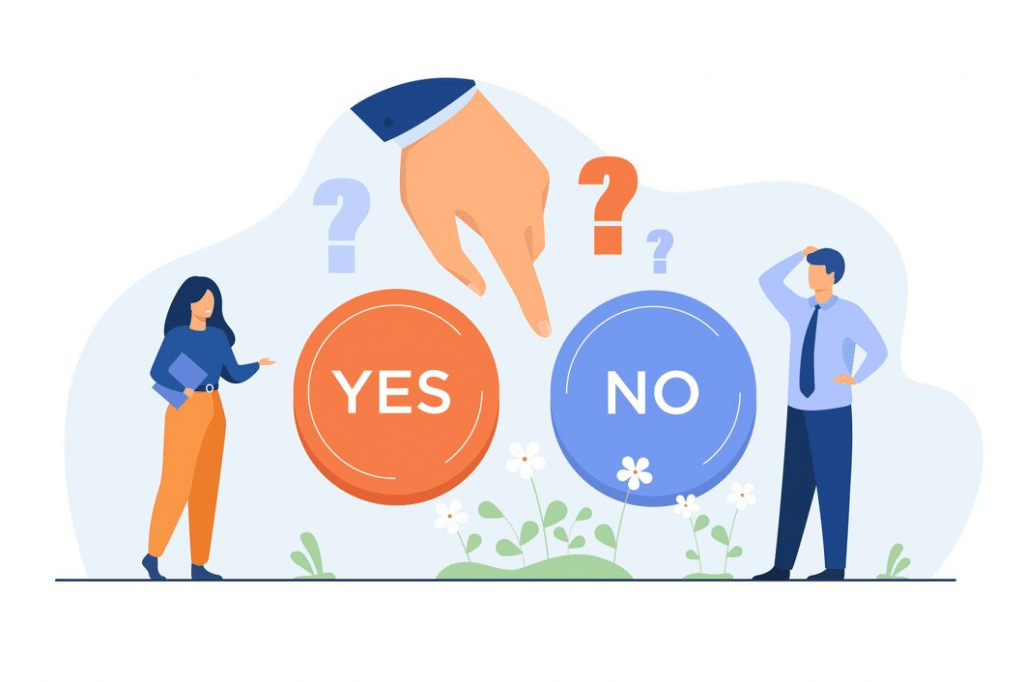
This phase is critical to transform leads into customers, as it focuses on establishing trust and clearly demonstrates the value of your solutions.
Data-driven marketing
Leverage data to align your marketing efforts more closely to the specific requirements and interests of leads at this crucial stage.
Here’s how to use data to get your prospects over the line:
✨ Personalized campaigns: Utilize data insights to create email campaigns that speak directly to the needs and interests of each lead.
✨ Retargeting ads: Implement retargeting strategies to keep your solutions top of mind for leads who have shown interest.
✨ Customized demos: Offer personalized product demonstrations that address specific features or benefits relevant to the potential customer.
Data-driven approaches ensure that your marketing efforts are relevant and targeted, which increase the likelihood of conversion.
Targeted content and offers
This involves giving that final nudge toward making a purchase decision by presenting compelling and highly relevant offers.
✨ Tailored landing pages: Create landing pages that are specifically designed for different segments of your target audience.
✨ Solution guides: Provide in-depth guides or whitepapers that detail how your solution can solve specific business problems.
✨ Special promotions: Offer time-limited promotions or exclusive trials to create a sense of urgency.
Tailoring content and offers to the specific stage of each lead in their buyer’s journey can significantly increase the chances of conversion, as it demonstrates a deep understanding of their requirements.
In summary, the Decision phase is about reinforcing the trust and relationship built in the earlier stages and clearly demonstrating the unique value and benefits of your solutions, tailored to the specific needs of your leads.
The aim is to provide all the information and reassurance needed for leads to make purchasing decisions.
Final Thoughts
To wrap up, B2B inbound marketing is all about meeting businesses or prospects where they are. It’s about drawing in the right people, talking to them in a way that makes sense, and making sure they’re happy at every step.
What’s great about this approach is how it naturally brings customers to you by offering them the kind of help and information they really need. We’ve seen that the key to doing this well is to really understand what B2B buyers are looking for.
Whether it’s through creating easy-to-understand content, using data to make your messages spot-on, or ensuring your emails speak to your customers, it’s all about making your brand a helpful partner.
🚀Ready to elevate your B2B marketing strategy?
But what if you could take your inbound marketing to the next level? This is where Hyperise steps in. It’s a platform designed to integrate personalized images with your existing outreach tools and website, which seamlessly merges the benefits of hyper-personalization with your marketing efforts.
With Hyperise, you can add a touch of personalization that resonates with each individual, which will make your messages stand out in a crowded digital space.
Explore how Hyperise can transform your approach and help you connect with your audience like never before. Sign up for a free trial today!
Last Updated on December 6, 2023 by Ash